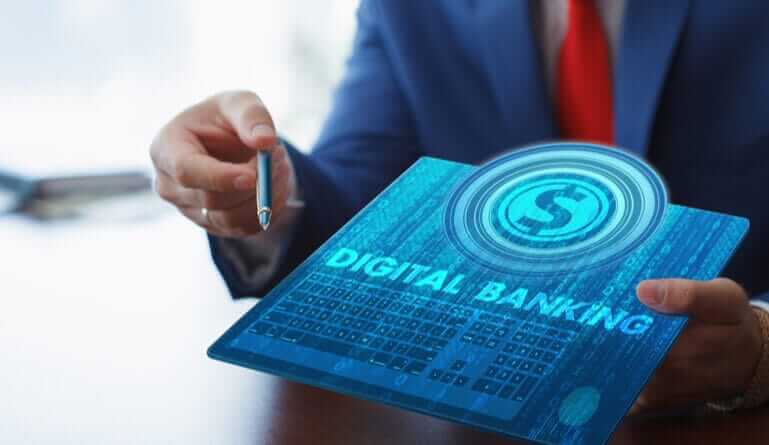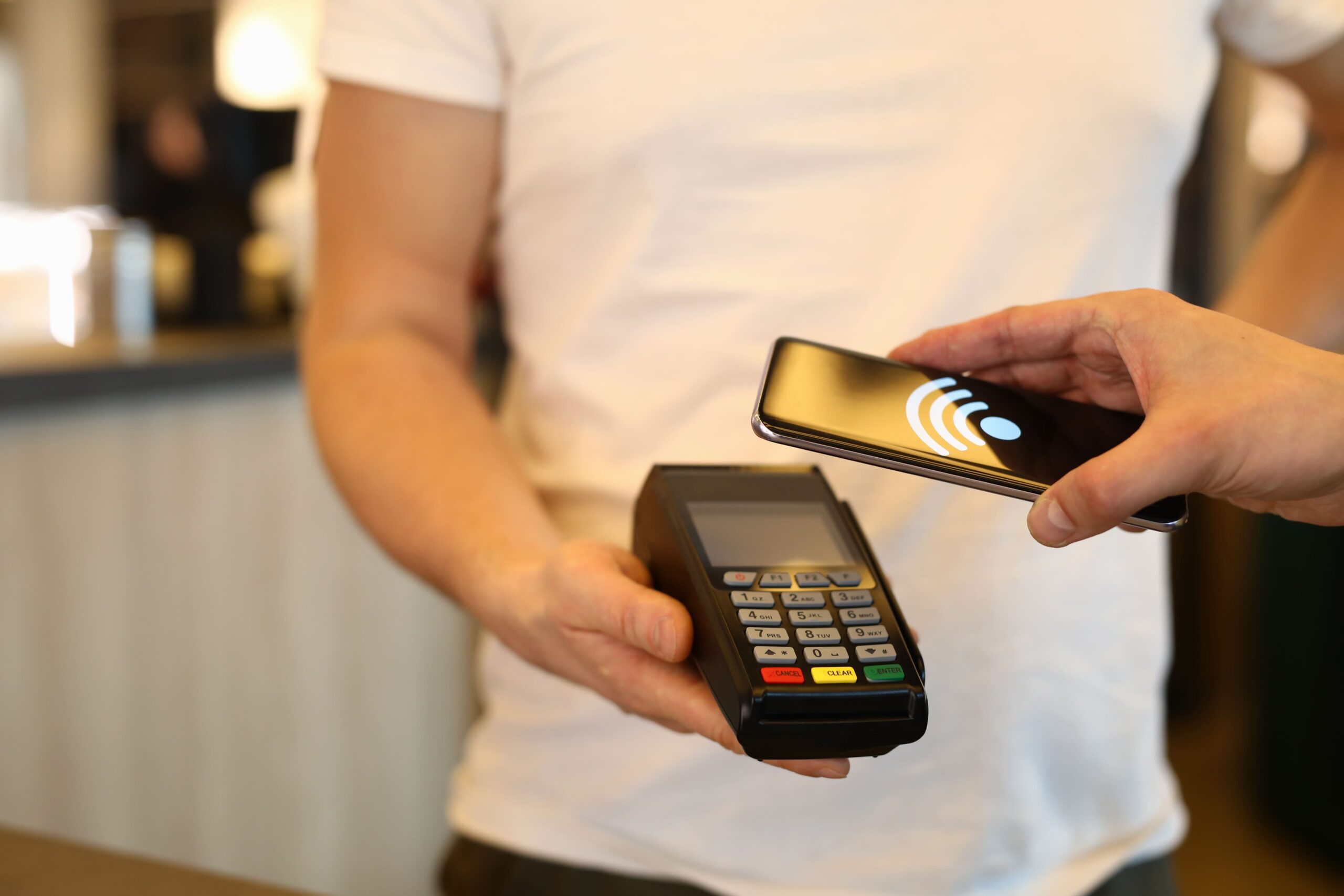The banking industry has changed dramatically over the years. While customers regularly walked into a branch to withdraw money, transfer funds, or seek information about products about 50 years ago, today, a majority of customers prefer to conduct basic financial transactions online, leading to the popularity of digital banking.
The Modern Customer Demands an Omnichannel Digital Experience
In 2017, PwC indicated the rise of the digital-only banking customer in its Digital Banking Consumer Survey(1). The report specifically pointed to a new breed of customers that is labeled as “Omni-digital” or those who increasingly preferred digital modes to conduct their banking, mostly avoiding physical channels of banking.
What Is Digital Banking?
According to the FFIEC(2), e-banking is defined as the “automated delivery of new and traditional banking products and services directly to customers through electronic, interactive communication channels.”
The Growing Importance of Digital Banking
The arrival of the Internet is synonymous with the rise in digital banking, fuelled by the advent of ATMs and debit cards in the 1960s. Today, thanks to the Internet and higher penetration of mobile devices, banks have been able to introduce multiple channels of engagement for their customers.
Digital banking offers convenience for both the banks and its customers. While customers can save time and hassle through convenient banking transactions that can be conducted on-the-go, banks save money on physical infrastructure and hiring costs by moving a part of their transactions online.
While in-branch banking continues to remain vital, the benefits of digital banking cannot be denied, which is probably why Santander, a leading bank, recently decided to slash its branch network by almost a fifth(3).
Digital Banking vs. Online and Traditional Banking
Everybody understands traditional banks – or the original banks that offered checking accounts. They were the first to provide financial services, such as money deposits, loans, money transfers, bill payments, and so on. However, banking was location-bound, and a visit to your nearest branch was necessary for every single transaction.
With the advent of the Internet, financial institutions were able to overcome the location barrier to some extent by creating an active internet presence. Today, most banks with physical branches also offer online banking or internet banking that enables customers to access their account information online, and also make transfers or set up automatic payments.
A digital bank takes the transition to the Internet a step ahead by eliminating the need for physical branches completely.
Nnamdi Azodo(4) of ALAT Digital Bank says that “Digital banking is the application of technology to every banking activity, process and program thereby making the customer’s experience simple, easy and convenient and in the process eliminating the need to be at a physical location.”
Simply put, a customer’s relationship with a digital bank starts and stays online at all times, without the need to visit any physical branch of the bank.
Benefits of Digital Banking
Banks around the world are realizing how digital technology investments can benefit their customer acquisition strategies and also improve customer satisfaction while reducing overall costs for both the banks and the customers.
Below we have listed some benefits of digital banking that cannot be ignored by anyone:
1. Simplify the Onboarding Process
Banks can make onboarding easier for customers, as well as employees, through a fully-mobile process that is enabled by advanced technologies. For example, while opening a new account, an applicant is asked to provide a large number of documents, such as ID Proofs, employment proof, address, etc.
With the help of modern technologies, it is possible to enable your customers to upload these documents using their smartphone, and the extracted data can be automatically processed and updated in the bank’s systems, saving time and hassle for everyone.
With AI, it is also possible to quickly analyze customer data for mortgage applicants as well as their past financial behavior to determine the likelihood of default and decide the fate of their application instantly.
2. 24/7 Banking
Owing to digitization, customers can access their accounts 24/7 and no longer need to stand in lengthy queues for the simplest of transactions. Digital banking via mobile apps makes it convenient to bank anytime from anywhere, adding to the customer experience significantly. The rise in digital banking has also improved customer service in the banking section with the introduction of real-time customer support channels, such as live chat and co-browsing, which is highly effective for query resolution.
3. Affect Cost Savings
Introducing automation in various processes can decrease costs and streamline the operational processes to deliver more value to customers. Digitization also reduces overhead costs and staff expenses, which can be passed on to customers in the form of reduced charges. Something as simple as swapping paper statements with e-statements can save time, money, and also the environment.
The Future of Banking
What we have shared above is just the tip of the iceberg – or the very obvious benefits of digitization in banking. However, the infusion of emerging technologies, such as Artificial Intelligence (AI), Big Data, Blockchain, and immersive technologies, holds the key to the future of banking.
Let’s see how:
1. Increased Personalization
Customers don’t want to be treated like numbers but expect customized services that add more value to their experience. One way in which personalization can be achieved is through data collection and analysis using predictive intelligence and other machine learning algorithms that point to future consumer behavior.
Collecting data, fortunately, is not a problem for the financial industry. However, how they choose to use it is what is essential. We’d like to share the example of American express that has a database of over 100 million credit cards globally. The company used this data to create a sophisticated predictive model using machine learning to prevent churn. The company analyzed over 115 variables, including historical transactions, to identify the accounts that were most likely to churn(5) and take remedial actions to improve retention(6).
Another idea for personalizing your customer experience is enabling voice search technology for your customers. Many banking customers use Alexa, Amazon’s voice assistant, to check their account balance or credit card statements. With new developments in the field of natural language processing (NLP), digital assistants may also handle more complicated tasks in the future, like renewing your car insurance.
2. Automation in Banking
McKinsey(7) reports that banks can automate up to one-third of their processes through smart technology implementation that can reduce costs and eliminate human error to a large extent. JP Morgan Chase has already taken a step in this direction with its data-based automation platform, COIN(8).
Chase’s Coin is powered by a private cloud network and uses a robust machine-learning algorithm to review complicated documents. It has been reported that the platform only takes a few seconds to finish regular tasks that previously took up to 360,000 hours to complete.
3. Blockchain in Banking
Decentralized systems spell the future of secure digital banking. Recently, Mastercard filed a patent on putting credit cards on a public blockchain to verify users’ payment credentials. By integrating this system with point-of-sale (POS) devices, payments can be secured as users needn’t present their cards physically, which eliminates the risk of data being skimmed from payment devices. Similarly, forward-looking banks are testing various use-cases of blockchain to make digital banking convenient and more secure for everyone.
4. Virtual Banking
Immersive technologies, such as augmented reality (AR), are being increasingly adopted by companies for providing personalized experiences to their customers. The National Bank of Oman offers its users an AR-enabled app that helps them locate their nearest branch or ATM using their smartphone camera. Banks with customers in remote locations can also set up virtual branches using AR technology for enabling a seamless, at-home banking experience that is similar to banking in person.
(Also Read: Top Digital Banking Trends)
The Human Touch
In a highly competitive industry, financial institutions are increasingly investing in technology to improve their customer experience and increase operational efficiency. Also, there is a requirement to make banking transactions highly personal and interactive. While customers prefer digital banking for simple transactions, most of them like to interact with a human for complicated financial products, such as a home loan. Therefore, banks cannot rely on digital entirely and do away with the human touch. However, they can use technology such as AR to set up virtual branches or use face-to-face video chatting and co-browsing to make digital banking much more human and interactive.
Conclusion
Change is the only constant, and banking institutions that wish to succeed in today’s competitive landscape must adopt emerging technologies to make banking much more secure, personalized, and cost-effective for everyone.
The tips mentioned above have been used by leading banks to boost their profits and customer base and will undoubtedly help you create a seamless digital banking experience.
__________________________________________________________________________________

Sam Makad is an experienced writer and marketing consultant. His expertise lies in marketing and advertising. He helps small and medium enterprises to grow their business and overall ROI. Connect with Sam Makad on Twitter or LinkedIn.
__________________________________________________________________________________




